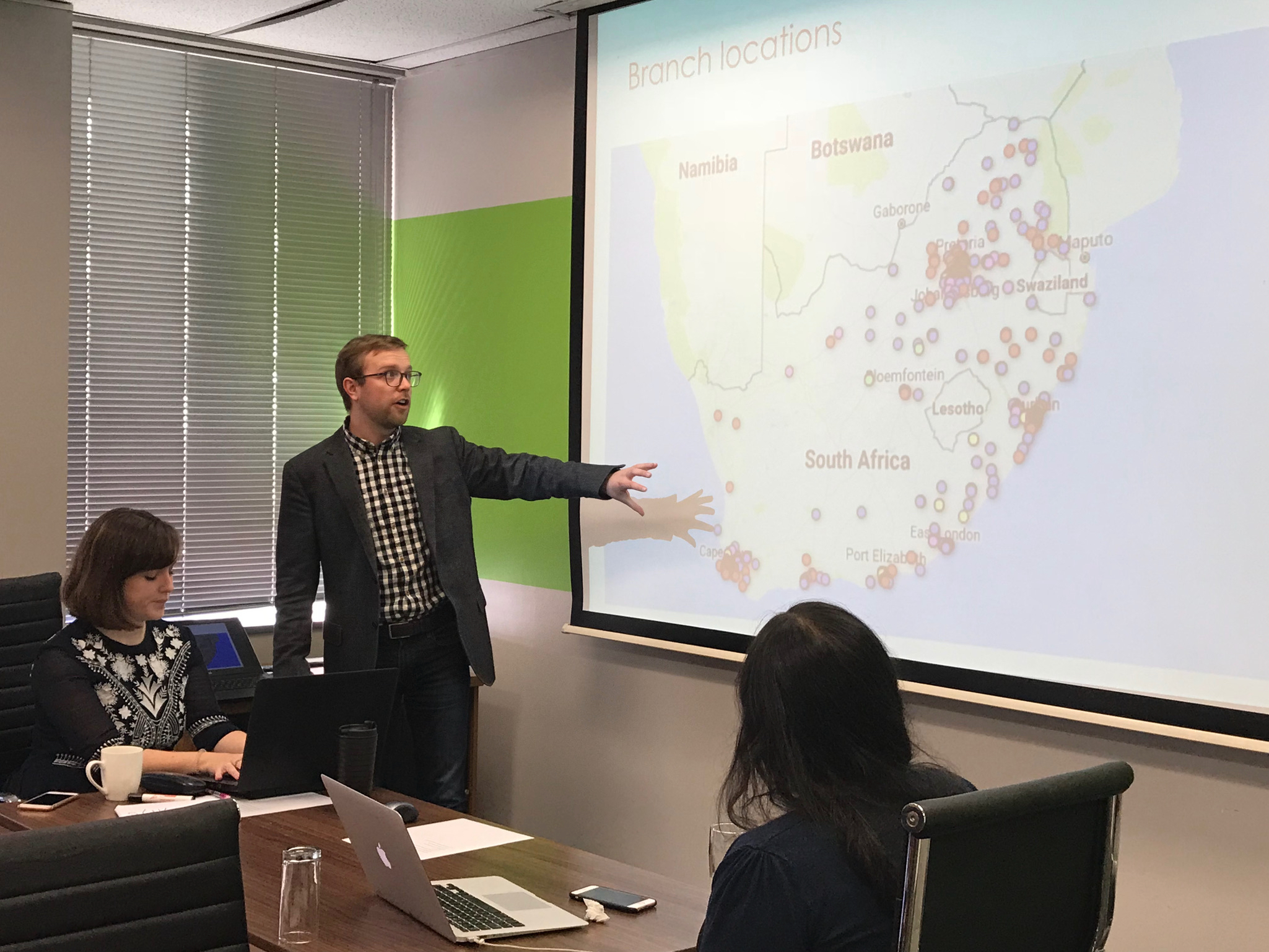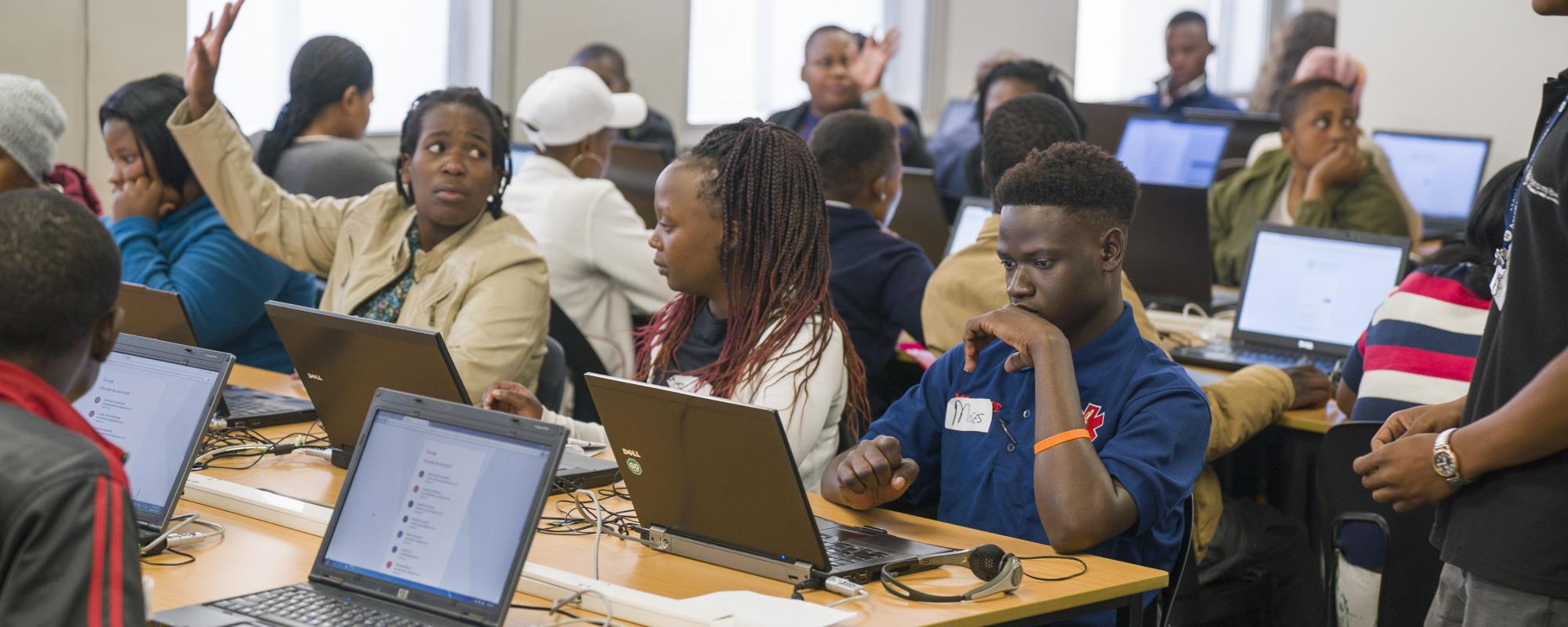This study takes place in South Africa, and potentially Rwanda. Workseekers for the pilot study were recruited from all nine provinces in South Africa, within a range of urban and peri-urban locations. South Africa has an exceptionally high rate of youth unemployment, with the broad unemployment rate consistently above 50% between 2018 and the first quarter of 2020. Unemployment is particularly acute among black youth and women, who are the focus of our partner, Harambee. In South Africa, as in other developing countries, the large number of unemployed youth increases the costs of screening applicants for firms, especially as many signals of skill are imprecise, and are distributed very unevenly over the population of young workseekers.
Youth unemployment is a serious concern for low and middle-income countries (LMICs). Globally, youths aged 15-24 are three times less likely to be employed than their older counterparts, and the demographic structure of many developing countries means that young people represent an increasing share of the labour force. The lack of easily interpretable information about skills of workseekers is one important reason for this, as demonstrated in previous work in South Africa. Firms that are uncertain about the quality of applicants might be risk averse and offer lower wages, or decide to not hire at all. This is particularly true if, once workers are employed, there are separation costs that make it difficult for firms to correct hiring mistakes. Firms often state that soft skills are particularly important for young workseekers, but these are also particularly hard to observe prior to employment. This problem was aggravated during the COVID-19 pandemic. Lockdown and other restrictive measures destroyed existing employment relationships that have been difficult to restore during the recovery phase. Moreover, youth were particularly vulnerable to the shocks caused by the COVID-19 pandemic as they work in less formal or permanent jobs. As with previous crises, the youth are at risk of losing critical formative work experience, with negative effects on their employment and earning prospects for the rest of their lives (Kahn, 2010).
The evaluation examines the impact of using soft-skills to match prospective candidates to entry-level jobs. For this purpose we collaborate with large employers who source entry level employees through the Harambee Youth Employment Accelerator.
As preparation for the main trial, we began piloting work in January 2020. The pilot activities consisted of two core components. First, we developed and piloted reliable and relevant soft skill measures. Secondly, we conducted a pilot study with 155 job-opportunities of a single employer to test the experimental infrastructure. We are currently preparing the main study for which we will work with a number of corporate partners.
Piloting Soft Skills Assessment Tools
We will match on a composite of skills measures that can be conducted by phone. We used Harambee’s assessment of spoken English communication in our previous work and find it predicts employment and earnings. We have also selected and piloted two self-reported measures of soft skills. We conducted a literature review to select eight measures of soft skills that are correlated with productivity and retention in other contexts and adapted the measures to the local context. In a pilot study in February 2020, we surveyed 2,283 workseekers to collect these eight measures. We found five had acceptable psychometric properties and two of the five, Behavioural Activation and Growth Mindset, were most strongly correlated with current employment and prior work experience. We did not use these two measures to shortlist candidates for TymeBank’s recruitment. But we found that candidates in the top skill tercile on Behavioural Activation and Growth Mindset) were respectively 44% and 55% more likely to be hired by pilot branches than candidates in the middle and bottom terciles.
We conducted a pilot study with 155 job-opportunities to demonstrate the viability of the envisioned research design.

We randomly selected some job-opportunities to select candidates according to a pre-existing soft skills measure (the treatment group), and some to continue using current hiring criteria (the control group). Eligible candidates with high soft skills in the treatment group received interview invitations before candidates with lower skills. In the control group, there was no such prioritisation. To be eligible for these jobs, candidates had to be currently unemployed and under the age of 35. Harambee contacted almost 17,000 candidates and invited 2000 for an interview. 155 candidates were selected for the open positions. Initial results from the pilot study were successful - candidates selected in the treatment group had 26% higher soft-skills.
Piloting Firm Data Collection
We are now working with our corporate partner to obtain data on retention and productivity of selected candidates, and analysing data from the pilot to finalize the design of the main study. We want to pilot multiple methods of collecting firm data, borrowing methods used initially for worker data collection. With our first 100 vacancies, we will randomly allocate vacancies to have data collected using each method and examine response rates from firms. Our aim is to discard methods with disappointing results.

(1) High-frequency enterprise-level panel survey (via phone or online): in previous work, Garlick et al. (2020) interviewed smaller enterprises at varying frequencies and modalities (in-person/over the phone). We also ran 17,500 phone interviews with jobseekers, with a follow-up rate of 91% (Carranza et al., 2022).
(2) Face-to-face surveys: we first piloted this method with 69 firms in 2018 in Johannesburg (Carranza et al., 2022). We analysed sector, hiring practices, payroll costs, application numbers as well as willingness to pay for skill information.
(3) Collecting payroll data: Harambee has done this with selected clients, including Nando’s, Pick ‘n Pay and Woolworths (fast food and retail firms).
Main Study
Our interventions examine whether the alternative matching criteria, described above, can improve the matching process. We are varying the matching criteria used for individual vacancies, relative to the status quo, to generate variation in the attributes of interest among candidates hired for a vacancy. These alternative matching algorithms are: (i) using the results of the soft skills assessment; (ii) using a combination of the soft skills assessment and candidate performance in the school-leaving exam and years of work experience and (iii) only years of experience and education.
When a vacancy is listed on the platform, candidates apply to it, filling in a soft skills assessment we have developed, and uploading proof of their schooling qualifications. Harambee’s platform automatically generates a database of applicants who meet basic eligibility criteria, such as high school completion, as well as geographic eligibility. JPAL staff then randomise vacancies to shortlist candidates using the three different types of criteria to generate hiring shortlists. These shortlists are then sent back to Harambee staff to send on to firms.
Fieldwork is currently ongoing, analysis is pending.
